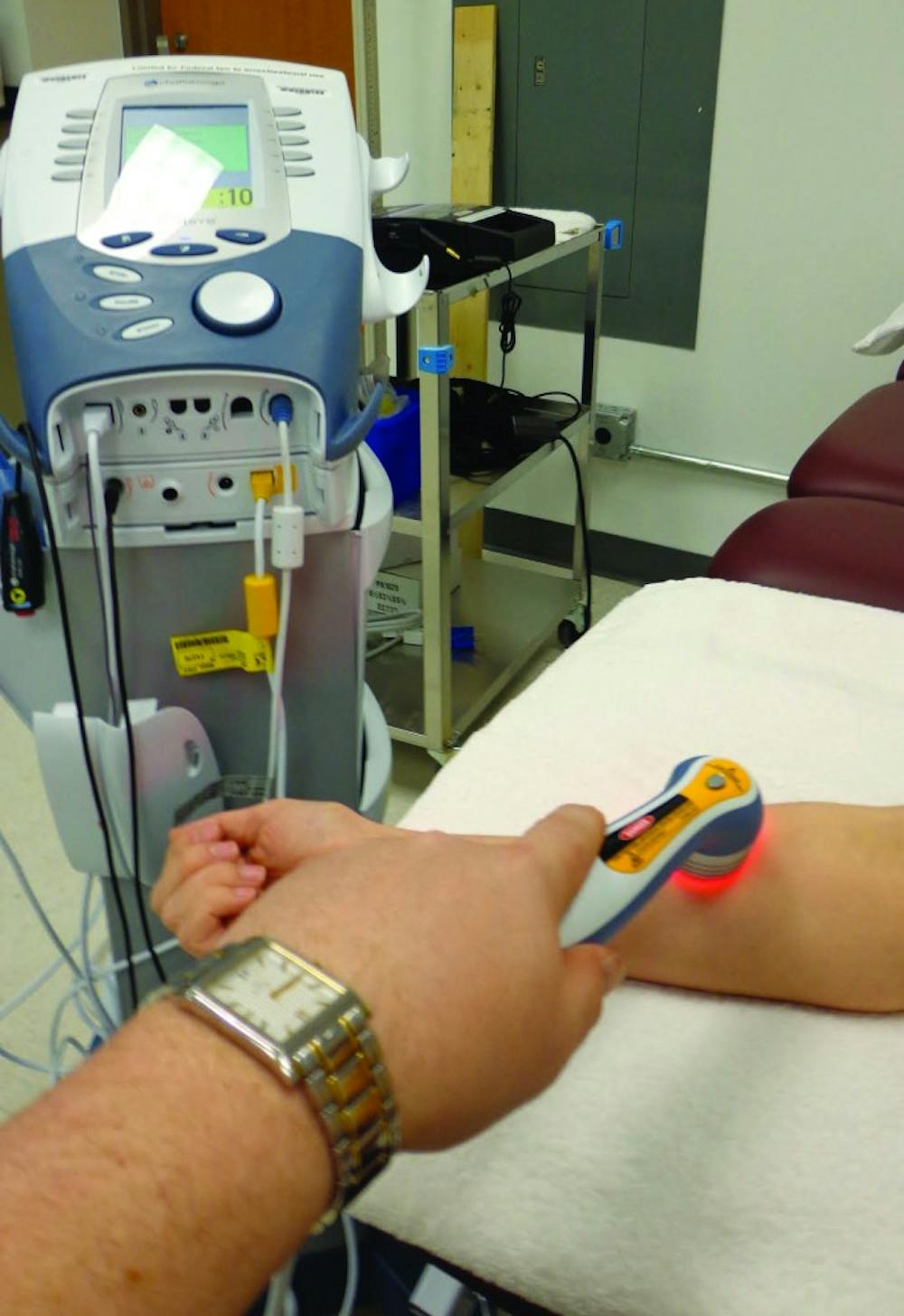Professor to conduct studies on muscle pain and flesh wounds
Central Michigan University health professions professor Blaine Long will conduct two studies on the treatment of muscle pain and flesh wounds this semester.
Long’s first study employs an innovative rehabilitation method to treat something that often affects students carrying heavy backpack loads—myofascial trigger points. Muscle knots, as they are more commonly referred to, are the lumps in the neck and shoulders that cause pain.
With the assistance of CMU colleague, Kevin Miller, Long will focus his studies on post-acute care rehabilitation, which refers to medical treatment following the initial treatment of an injury or illness.
"The unfortunate fact about these trigger points is that they can be very debilitating and they can be found in most people; especially college students who often have bad posture as a result of excessive backpack loads and improper backpack carrying," Long said.
Long said his study will use an innovative Electric Point Stimulator designed to locate and treat myofascial trigger points.
When a trigger point is located, the EPS will make a sound alerting the investigator to send a small electrical pulse to the afflicted area. The procedure is simple and non-evasive.
Long’s second study will compare the traditional method of treating flesh wounds and abrasions with the use of Low Level Light Therapy. The Low Level Light therapeutic approach is a new method of treating skin abrasions.
“LLLT is effective in the facilitation of wound contractions of partial-thickness wounds, promotes tissue healing by facilitating collagen synthesis, increases motility of keratinocytes in the skin, and stimulates the release of growth factors responsible for skin regeneration," Long said.
The study will compare the effectiveness of the therapy to occlusive dressings. Contrarily to non-occlusive dressings, occlusive dressings allow oxygen and other gases to pass through, but are resistant to water and bacteria. They are believed to promote healing and decrease infections better than non-occlusive dressings.
“It is thought that treating a skin wound by cleansing it with water or saline, applying a topical antibiotic cream, and then covering the wound with a non-occlusive dressing or Band-Aid speeds the healing process. However, this is not true,” Long said.
Long said occlusive dressings are beneficial in the treatment of a superficial wound, however it is unclear as to whether they are a better treatment option as compared to LLLT.
As of now, no CMU students are participating in either of Long’s studies. According to Long, neither studies are grant funded. He has applied for a grant for the second study, which is currently pending.




